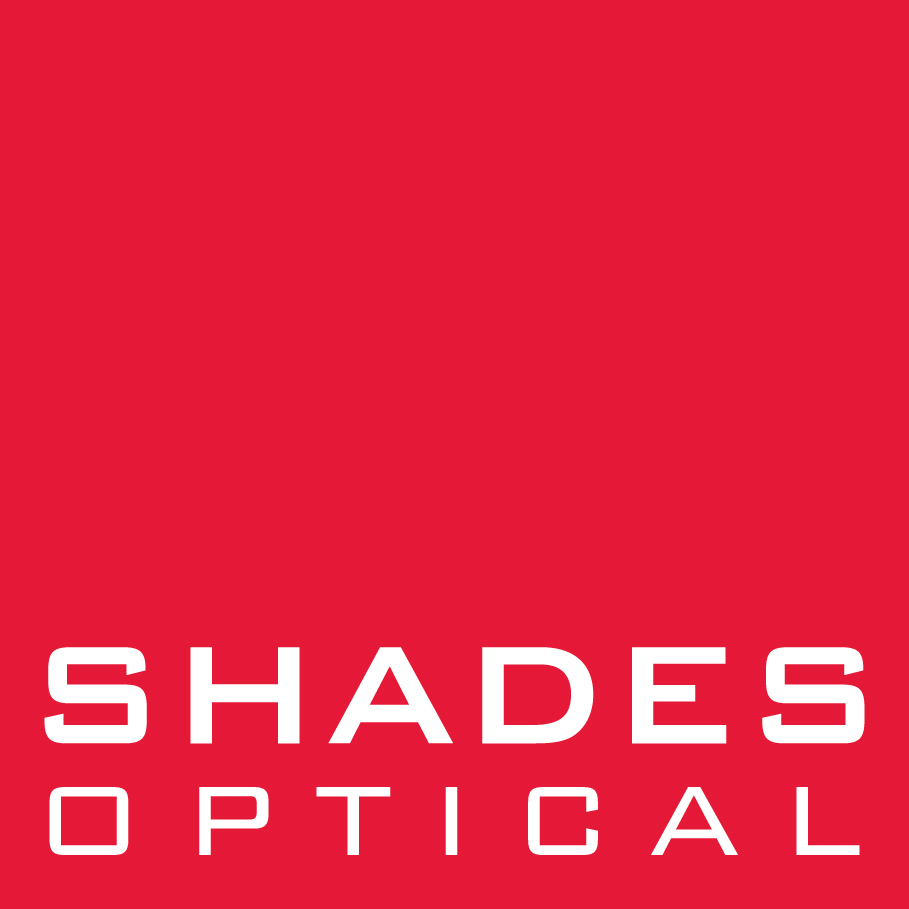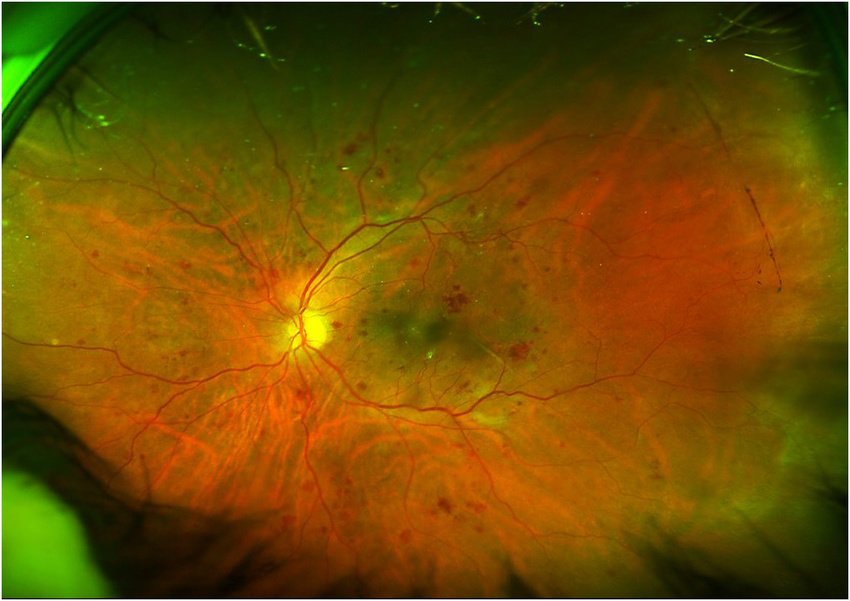Empowering Your Vision: Innovative Tools We Use at Shades Optical - Wide Field Fundus Photography
Introduction
At Shades Optical, we're dedicated to not just preserving but enhancing your vision through the best advancements in eye care technology. Our approach sets us apart, as we go beyond the conventional to incorporate innovative tools that offer a deeper, more precise understanding of your eye health. From advanced diagnostic equipment to personalized care plans, Shades Optical is at the forefront of integrating cutting-edge technology into every aspect of our practice. Join us as we explore how these technologies have revolutionised eye care, offering unparalleled benefits to our clients.
Wide Field Fundus Photography: The Big Picture in Eye Health
Our Optos Ultra-widefield (UWF™) Retinal Imaging Device utilises advanced technology to capture detailed images of the retina. It employs a unique scanning laser ophthalmoscope with a specialized elliptical mirror to project a low-powered laser across the retina. This method allows the device to image up to 82% or 200 degrees of the retina in a single, panoramic image. The technology is designed to penetrate through media opacities like cataract and vitreous floaters, providing clear, detailed views of the peripheral retina, which is essential for early detection of retinal diseases and conditions.
The device works by employing a combination of laser scanning technology and a unique, wide-field imaging system. It uses a laser light to illuminate the retina, capturing detailed images that cover a vast area of the retinal surface, far beyond what traditional imaging methods can achieve. The key to their effectiveness lies in the proprietary method of scanning and capturing images, which involves projecting laser light onto the retina through a specially designed optical system. This system captures high-resolution images of the retina, including the periphery, which is critical for the early detection of conditions that may not be visible with standard imaging techniques. The ability to capture such wide-field images is pivotal in diagnosing, treating, and managing various retinal diseases, offering a panoramic view of the retina in a single capture.
From Dr. Bill Koppin at Shades Optical:
“At Shades Optical, every day brings an opportunity to deepen our patients' understanding of their eye health through a unique and interactive experience. It's not about sitting across from each other in a sterile exam room; instead, we're side by side, looking at a 40-inch screen that brings the inner workings of the eye to life with incredible clarity, thanks to Wide Field Fundus Photography.
As I display the images, the most common reaction from my patients is immediate curiosity. "What are we looking at here?" they often ask. I explain, "We're exploring the back of your eye." This is the moment when our conversation transforms from a simple question-and-answer session to a deep dive into their visual health.
Pointing to areas of interest on the screen, my patients' inquiries guide our discussion. "This area here? That's your whole retina," I might say, clarifying the view Wide Field Fundus Photography provides us. Sometimes, the digital image isn't enough to fully convey what we're seeing, so I'll bring out a small model of the eye. By pointing to specific parts of the model, I can illustrate where the images are coming from, making the unseen aspects of their eye health tangible.
"Dr. Bill," they often begin, curiosity piqued by the unfamiliar term, "what exactly is Wide Field Fundus Photography?" I explain that this technology, particularly through Optos Ultra-widefield (UWF™) Retinal Imaging Devices, allows us to capture a comprehensive view of the retina. It's like having the ability to see the entire forest from above, rather than just a few trees at a time. This panoramic perspective is crucial for detecting diseases that could otherwise remain hidden in the periphery of the eye.
As our conversation deepens, questions about the technical aspects of the imaging process arise. "How does it work?" they ask, intrigued. I delve into the use of advanced laser wavelengths that these devices employ to provide detailed views of the retina, enabling us to spot even the most subtle signs of potential issues. "It's akin to having a high-powered camera that can capture the full expanse of the eye's interior landscape," I tell them, "ensuring nothing important is missed."
The inclusion of UWF™ imaging at Shades Optical isn't just a matter of employing cool gadgets; it's about solving real problems. Patients come to me with concerns about their vision and eye health, often unaware of the underlying issues that could be lurking out of sight. Through stories and examples, I illustrate how this technology has unveiled conditions in their early stages, allowing for interventions that can prevent serious complications down the line. "It's about giving you the complete picture of your eye health," I emphasize, "so you can enjoy a future with the best vision possible."
Our approach at Shades Optical is rooted in a belief that eye care should be comprehensive, preventative, and accessible. By integrating Wide Field Fundus Photography into our practice, we're not just enhancing our diagnostic capabilities; we're elevating the standard of care for our patients. It's a commitment to their health and wellbeing that extends far beyond the exam room, impacting their lives in ways that truly matter.”
Comparison of Optos Ultra-widefield (UWF™) and conventional imaging methods
Optos Ultra-widefield (UWF™) Retinal Imaging Devices are based on the principle of scanning laser ophthalmoscopy (SLO), which is a technique that uses laser light to scan the retina and produce high-quality images. Unlike conventional fundus cameras, which use white light and lenses to capture images of the retina, SLO devices use laser light of different wavelengths to illuminate the retina and a detector to capture the reflected light. This allows for better contrast and resolution of the retinal structures, as well as reduced glare and distortion from the optical media of the eye.
However, in general, SLO devices have a limitation in terms of the field of view they can capture. Typically, they can only image up to 30 degrees of the retina, which is insufficient for detecting peripheral retinal lesions or abnormalities. To overcome this limitation, Optos developed a unique, wide-field imaging system that can image up to 200 degrees or 82% of the retina in a single capture. This system consists of a specialized elliptical mirror that reflects the laser light onto the retina and a digital sensor that captures the image. The mirror has a concave shape that allows it to project a virtual pupil onto the eye, which is larger than the actual pupil. This enables the device to image a wider area of the retina without requiring pupil dilation or eye rotation. The digital sensor has a high pixel density that allows it to capture the fine details of the retina, such as blood vessels, nerve fibers, and lesions.
The Optos Ultra-widefield (UWF™) Retinal Imaging Devices use four different lasers to image the retina: green (532 nm), red (635 nm), blue (488 nm), and infrared (820 nm). Each laser has a different penetration depth and contrast level, which allows the device to image different layers and features of the retina. For example, the green laser can image the superficial layers of the retina, such as the nerve fiber layer and the ganglion cell layer, while the infrared laser can image the deeper layers, such as the choroid and the sclera. The blue laser can image the macula and the optic nerve head, while the red laser can image the blood vessels and the hemorrhages. By combining the images from different lasers, the device can produce a color composite image that shows the full spectrum of the retina. Alternatively, the device can produce a monochrome image that shows the specific features of the retina based on the selected laser wavelength.
The Optos Ultra-widefield (UWF™) Retinal Imaging Devices have several advantages over conventional imaging methods. They can provide a panoramic view of the retina, which is crucial for detecting and monitoring peripheral retinal diseases, such as diabetic retinopathy, retinal detachment, uveitis, and ocular tumors. They can also provide a detailed view of the retina, which is important for diagnosing and treating central retinal diseases, such as macular degeneration, glaucoma, and optic neuritis. They can also image through media opacities, such as cataract and vitreous floaters, which can obscure the view of the retina with conventional methods. Furthermore, they can image the retina without requiring pupil dilation or eye rotation, which can reduce the discomfort and inconvenience for the patient and the examiner.
Conclusion:
At Shades Optical, we're not just eye care professionals; we're visionaries committed to offering the pinnacle of eye care innovation. Through the integration of breakthrough technologies like the Optos Ultra-widefield (UWF™) as well as Pharmanex BioPhotonic Scanner, Swept Source OCT, and the Marco OPD III, we redefine what it means to receive comprehensive eye care. These tools enable us to offer a level of diagnostic precision and personalized treatment plans previously unimaginable, ensuring that our patients not only see the world more clearly but do so with comfort and confidence.
Our mission extends beyond the exam room. We strive to educate and empower our patients, helping them to understand their eye health and the incredible technologies available to support it. With Dr. Bill Koppin's passionate guidance and the advanced capabilities of tools like Wide Field Fundus Photography, we're able to illuminate the path to optimal eye health in ways that resonate on a personal level. It's this combination of cutting-edge technology, personalized care, and patient education that positions Shades Optical as a leader in the field.
Ready to Experience the Future of Eye Care?
Don't let another day go by without ensuring that your vision is in the best hands. Embrace the opportunity to benefit from the latest innovations in eye care technology. Book an appointment with Shades Optical today and step into a world where your eye health is supported by groundbreaking tools and a team that genuinely cares about your vision and wellbeing.
Let us empower you with the clarity and comfort you deserve. Click here to schedule your visit with us at Shades Optical.

